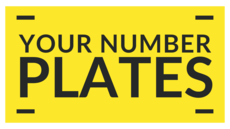1. Introduction: Why Number Plate Regulations Matter
Number plates are more than just a legal requirement—they are identifiers essential for road safety, law enforcement, and vehicle tracking. As vehicles evolve, so too must the regulations that govern how we display their identities.
2. Overview of DVLA’s Role in Plate Regulation
The Driver and Vehicle Licensing Agency (DVLA) is the governing body responsible for setting and updating standards for number plates in the UK. From design and legibility to material standards, the DVLA ensures that all plates meet visibility and compliance benchmarks.
3. Recent Regulatory Shifts in 2025
In 2025, DVLA introduced nuanced amendments to accommodate modern plate designs while cracking down on non-compliant styles. These updates aim to balance creativity with public safety and automated number plate recognition (ANPR) efficiency.
4. Material & Construction Requirements
All legal number plates must now be manufactured using durable, high-impact acrylic or composite materials certified to withstand harsh UK weather. Plates must not warp or fade under UV exposure, ensuring long-term clarity and performance.
5. Font and Typeface Standards
Only the Charles Wright 2001 typeface is permitted. The DVLA reinforced this in 2025 to eliminate confusing, stylised fonts that hinder legibility. Every character must be uniform and easy to distinguish from a distance or on surveillance footage.
6. Reflectivity and Visibility Rules
Reflective backgrounds remain mandatory, but DVLA now requires enhanced light-reactive materials that improve night visibility. Black characters must contrast sharply against the reflective white (front) and yellow (rear) backgrounds.
7. Legal Size and Spacing Guidelines
Characters must be 79mm tall and 50mm wide, with 11mm spacing between characters and 33mm between groups. Incorrect spacing may lead to fines and MOT failures, regardless of how “aesthetic” a plate may appear.
8. New Restrictions on Decorative Elements
Borders, badges, and logos are strictly limited. While national flags (e.g., Union Jack, St George’s Cross) are still allowed, slogans, tinted overlays, and glitter effects are explicitly banned. Plates must remain function-first.
9. 3D, 4D & Gel Plates: Clarified Standards
As of 2025, 3D and 4D plates are legal only if the raised characters remain solid black and conform to the required dimensions. Gel characters must not impair ANPR readability. The DVLA warned that excessive embossing or stylization may result in illegality.
10. DVLA's Crackdown on Illegible Plates
An increased number of fines and roadside checks are being carried out for plates that appear cracked, obscured, tinted, or modified. Police and MOT testers are now equipped with updated guidelines to spot non-compliance more efficiently.
11. Rules for Electric Vehicles and Green Plates
Green number plates, introduced for zero-emission vehicles, must adhere to the same visibility rules but include a green flash on the left-hand side. DVLA reminds drivers that the green element is symbolic, not decorative—tampering with it is punishable.
12. Personalized Number Plates: What’s Changing?
While personalization is still allowed, the DVLA has tightened controls on offensive or misleading plate combinations. Every application undergoes AI-assisted vetting for profanity, political messaging, or misleading resemblances to emergency services.
13. How to Stay Compliant in 2025
Vehicle owners should purchase from DVLA-registered suppliers and ensure their plates meet BS AU 145e standards. Always double-check spacing, font, and reflectivity before installation—especially when ordering custom or gel variants.
14. Penalties for Non-Compliance
Fines for illegal plates can reach £1,000. More seriously, repeat offenders may face plate confiscation or MOT failure. Police ANPR units can now flag illegal plates instantly, increasing the likelihood of on-the-spot penalties.
15. DVLA-Approved Plate Suppliers
To ensure compliance, DVLA publishes a list of certified plate makers. These vendors are trained and equipped to follow every regulation and typically request documentation (like V5C logbooks) before plate creation.
16. Future Trends in UK Plate Regulations
Looking ahead, the DVLA may roll out smart plates embedded with RFID chips or QR codes for fleet management and security. Biometric vehicle IDs and blockchain verification are also being discussed at the policy level.
17. Conclusion: Navigating Number Plate Compliance
Staying compliant with DVLA’s 2025 regulations is not just a matter of avoiding fines—it’s about contributing to a safer, smarter road network. As personalisation and technology advance, drivers must stay informed and responsible in their choices.

